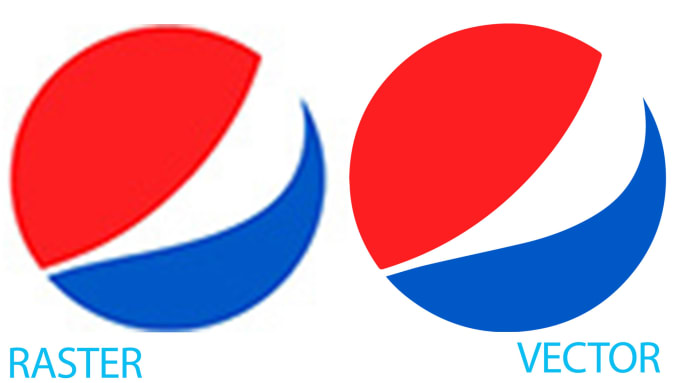

- #VECTORIZE RASTER IMAGE HOW TO#
- #VECTORIZE RASTER IMAGE FULL#
- #VECTORIZE RASTER IMAGE SOFTWARE#
- #VECTORIZE RASTER IMAGE DOWNLOAD#
However, if you need to edit individual elements within your image, or make it compatible with CNC software, vectorization is the way to go.
#VECTORIZE RASTER IMAGE SOFTWARE#
Additionally, despite their large size, most standard image editing software supports raster files, so they can be useful for sharing and storing images. Raster images can still be of a high quality and are useful for those working in roles involving digital photography or web design.
#VECTORIZE RASTER IMAGE DOWNLOAD#
You also might not be very popular with the colleagues you share designs with, as you’ll be forcing them to download large files. This isn’t ideal in terms of computer storage. Raster images need to store color information for every single pixel, resulting in the file sizes being fairly hefty. We’ve already touched on the quality issues that come with re-scaling images that are a collection of pixels-and that’s not where the issues end. While raster and vector formats can both be useful in their own ways, vector images are a necessary choice if you’re looking to use your designs in a CAD context. Plus, it’s easy to embed SVG images into web pages, making them a great replacement for raster images in this realm. Practically all web browsers support this format. What separates SVG from other vector files, like DXF and DWG, is the fact that SVGs are suited primarily for use on the web, rather than with CAD. Standing for Scalable Vector Graphics, this vector format is-you guessed it!-particularly useful if you’re going to be re-scaling your designs. While you might not be able to edit the images, there are ways you can at least view DWG files without AutoCAD. It’s still not the end of the world if you find yourself needing to open DWG files and you don’t have the native software. As you can probably guess, the downside to this file type is that not all programs (especially those not made by Autodesk) will be able to access DWG files. This file format is therefore a great option if you work primarily with AutoCAD.ĭWG stand for ‘ dra win g‘, with both 2D and 3D images being supported. DWG files are designed to be used with this specific software in mind and should enable you to get the most out of all of its features. So, what makes it different? Well, DWG is the native file format for AutoCAD. Initially created in the late 1970s, DWG was included alongside DXF from the very first version of AutoCAD in 1982. We highly recommend using DXF files if you’re looking to be able to share your designs.ĭWG is a file format that was also developed by Autodesk. Industries across the globe are able to successfully collaborate on projects without being restricted to a single type of CAD software. Thanks to these benefits, DXF has become the standard file format for data exchange within CAD. Even if you’re working with AutoCAD drawings, for example, other people do not necessarily need to have Autodesk software to access them (which can be an issue with some other vector file types). This has the effect of making the sharing process easier.

DXF is an open source format, which means that developers can include support for it in their software without having to pay for licensing.

#VECTORIZE RASTER IMAGE FULL#
This explains its full title: Design e Xchange Format. It was created with the intention of allowing users to share their designs between multiple CAD programs. As a result of these kinds of drawbacks, people looking to create, share and edit designs with CAD software will need to vectorize their raster images.ĭXF is a vector file format developed by Autodesk. Zooming in or resizing an image stored in a raster format will result in pixelation-thus, the quality will suffer. The same cannot be said for raster files. This means that even if you zoom in on the image or re-scale it, the quality will not be compromised. Each one is defined by a mathematical equation. These objects may be in the form of arcs, lines, text, etc. While raster files are made up of pixels, vector images are made up of a collection of individual objects. Vectorization refers to the process of converting an image to a vector format. With this in mind, we’ve put together a handy guide that covers everything you could possibly need to know about vectorizing images. Whether you’re designing, sharing or editing an image, vector file formats are (more often than not) going to be the best option to ensure your work is the best it can be.
#VECTORIZE RASTER IMAGE HOW TO#
Anyone working with CAD knows that learning how to vectorize an image can make your life so much easier.


 0 kommentar(er)
0 kommentar(er)
